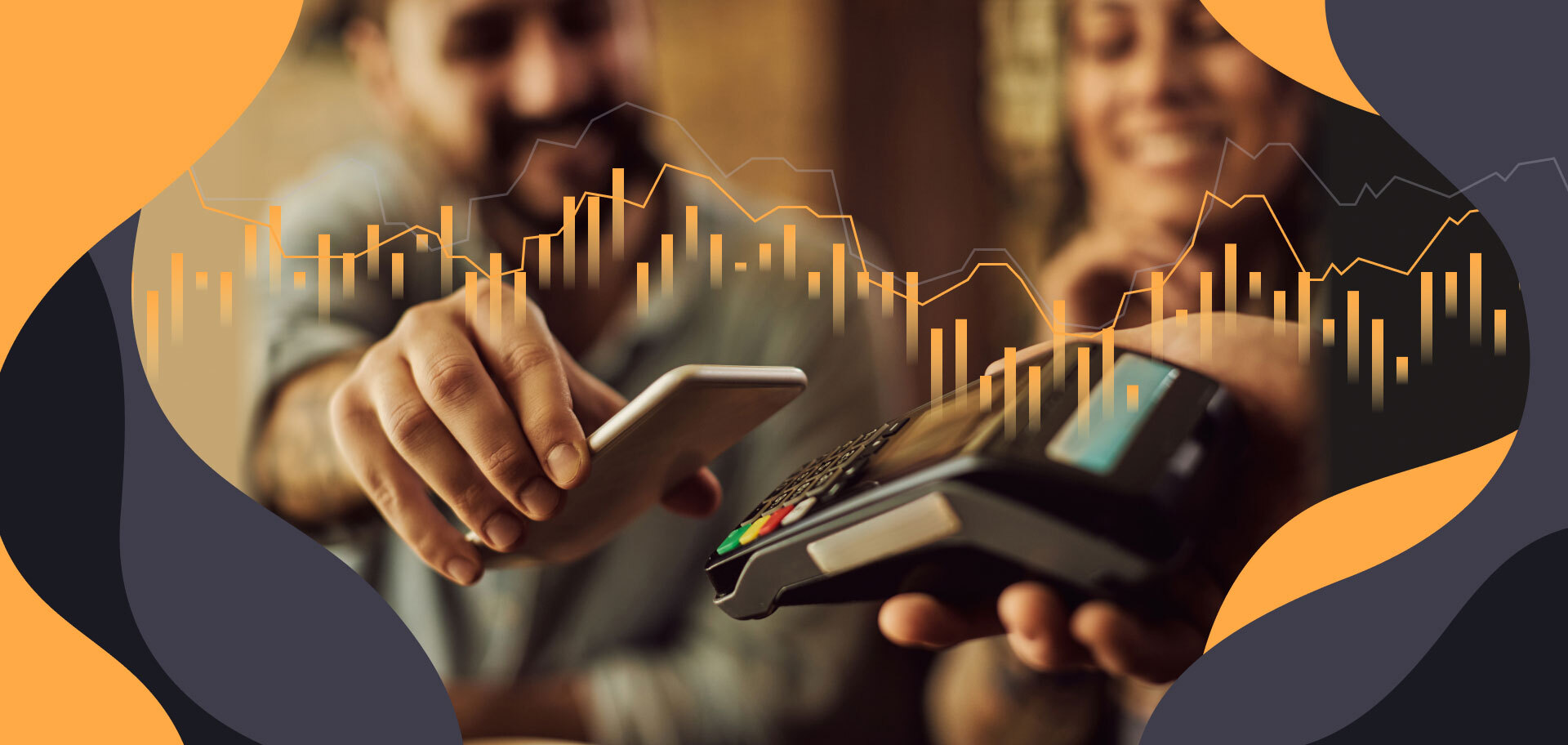What does the digital wallet market look like in 2024?
It’s no secret that customers are switching to digital alternatives. Yet the momentum behind digital wallets is something else. Over two-thirds of consumers will use digital wallets by 2025, with 30% using more than one. Total transaction value across digital wallets is expected to surpass $16 trillion by 2028, and 70% of those using a digital wallet plan to make it their primary payment method.
Digital wallets are not just providing services to fintech-savvy users but also connecting previously underbanked communities in developing markets. Their natural integrations with peer-to-peer payments, Buy Now, Pay Later, and lending options create a breadth of services.
What major digital wallet types are available today?
Closed wallet
A closed wallet is limited to a specific merchant or group of merchants. Funds are only available for use in closed ecosystems. The issuing organisation usually sets this limit. Examples include:
- Loyalty programs
- Gift cards
- Retail chain cards
Semi-closed wallet
A semi-closed wallet allows users to make purchases at multiple locations. However, it includes restrictions on withdrawals or redemptions. Typically this is done to prevent users from transferring money from the wallet to external accounts or other wallets. Examples include:
- Prepaid cards
- Superapps
Open wallet
An open wallet, sometimes called an interoperable wallet, enables transactions across various merchants, organisations, and services. Open wallets offer greater flexibility and interoperability. Users can transfer funds and pick where to spend their money, even making ATM withdrawals. This makes an open wallet similar to a traditional bank account. Examples include:
- PayPal
- AliPay
- Google Pay, Apple Pay
Crypto wallet
A cryptocurrency wallet is designed to store, send, and receive cryptocurrency. They can be software wallets (accessible via desktop or mobile) or hardware wallets (physical storage devices). Users control their wallets using private keys. A crypto wallet can also be closed, semi-closed, or open. Examples include:
- Coinbase
- Ledger
- Trezor
Want to create your own wallet? Find out how Pismo can help
What defines a successful digital wallet system?
Security
Successful digital wallets prioritise encryption and tokenisation to keep users safe. Encryption ensures that sensitive data, such as credit card numbers and personal details, are securely transmitted and stored within the wallet. Tokenisation replaces sensitive data with unique tokens during transactions, reducing the risk of data breaches.
Convenience
Simplicity and ease of use are another marker of success. Intuitive interfaces, streamlined payment processes, and seamless navigation improve user satisfaction and adoption. Additionally, accessibility across multiple devices and platforms, including smartphones, tablets, and desktop computers, provides users with convenience and flexibility in managing their finances.
Interoperability
Interoperable digital wallets seamlessly integrate with various payment methods, including credit/debit cards, bank accounts, and mobile payment solutions. They support multiple payment networks and protocols, enabling users to transact across various merchants and service providers. This could also include partnering with a diverse network of merchants and businesses to ensure widespread acceptance.
User experience
Digital wallets that offer personalised experiences tailored to individual user preferences and behaviours enhance user engagement. Personalisation may include transaction categorisation, spending insights, and customised notifications. Another success marker is a seamless and efficient user experience, characterised by fast transaction processing and minimal friction. Prioritising speed and efficiency streamlines the payment process and reduces transaction times.
Value-added features
Rewards programs, cashback incentives, and loyalty rewards incentivise user engagement and loyalty. These value-added features provide users with additional benefits and encourage frequent use of the digital wallet. On top of this, integration with third-party services like ticketing platforms, transit systems, and retail loyalty programs enhances the wallet utility. Seamless integration with external services also expands the wallet’s functionality and offers users a comprehensive financial management solution.
How can AI play a role in digital wallets?
AI emerged as a significant trend in 2023, spurred by headline-grabbing solutions like ChatGPT. Even with all the buzz filtered out, AI remains an exciting prospect for digital wallets. AI enables personalised services, feeding on data points like consumer behaviour and preferences.
This allows for granular, customised offers for users, improving experience and creating a connection between the organisation and its customers. AI-enabled wallets can provide insights into financial health, predict future expenses, and offer advice for budgeting to hit future saving goals.
What regulations are in place for digital wallets?
Regulators across the world have begun to focus legislation specifically on digital wallets. Some have voiced concerns over issues including competition, privacy, and fees.
In the US, the Consumer Financial Protection Bureau (CFPB) submitted a proposal to regulate the technology giants’ digital payment services. The rules focus on the ways digital wallets collect and store user data. January 2024 saw a response from a lobby group representing multiple tech firms.
The EU has kicked off a project creating a European Digital Identity Wallet. This would enable users to store official documents in one accessible place. In November 2023, the Australian government announced it would create legislation to oversee the growing use of digital wallets.
Developments in 2023 have paved the way for more proposals as jurisdictions test the regulatory waters. 2024 could be a year to watch, with lawmakers seeking to treat big technology companies more like transitional banks.
How does Pismo enable impactful digital wallet creation?
Pismo provides a 100% cloud-native SaaS processing platform for banking and cards. Our platform enables banks, fintech companies, retail chains, and other service providers to create proprietary digital wallets effortlessly.
Utilising microservices and APIs, our platform is entirely modular. It allows you to create and iterate on your terms, composing solutions and products on the fly with unbeatable time-to-market.
The Pismo platform efficiently manages balances, accounts, and payments, meaning your digital wallet can become the foundation for a full-fledged digital banking service. Or, if you’re a fintech starting, use a Pismo-powered digital wallet to create the blueprint for your growth, build a customer base, and prepare for full banking operation.
Our feature set powers comprehensive and varied deployment for digital wallets:
Card ready for digital wallets
- Integration with major digital wallets, including Apple Pay and Google Pay
- Tokenisation support for major networks like Visa, Mastercard, and ELO
Card on File
- Store cards from third-party issuers
- Manage cards in real-time on the Pismo platform
Account digital wallets
- Host accounts and transfers for both payer and payee
- Create closed-loop or open-loop transactions
- Store proprietary cards in the digital wallet
Want to know more? Download our digital wallets product briefing or speak to one of our experts










